|
 |
 Автор: Williams Автор: Williams
 Дата: 16 декабря 2018 Дата: 16 декабря 2018
 Просмотров: 2 844 Просмотров: 2 844 |
| |
Bentley ProStructures CONNECT Edition Update 2 Version 10.02.00.20
including: Structural Synchronizer x64 build 10.02.01.147, LumenRT Update 11 build 16.11.04.34
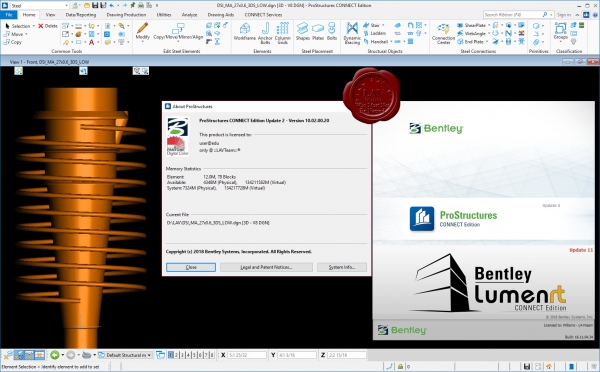
Bentley ProStructures предназначена для детального проектирования и изготовления металлических и железобетонных конструкций.
К продуктам Bentley ProStructures относятся программы ProSteel и ProConcrete. Обе программы предназначены для трехмерного моделирования конструкций при выполнении задач строительства и планирования.
ProSteel обеспечивает деталировку изделий из конструкционной стали и металла, а ProConcrete - деталировку и составление графиков усиления монолитных/сборных и предварительно напряженных железобетонных конструкций.
Продукты ProStructures позволяют инженерам сократить время создания документации, помогают им избежать ошибок и недоработок проекта и обеспечивают проектирование и документирование комбинированных конструкций. |
| |
 Читать статью дальше (комментариев - 15)
Читать статью дальше (комментариев - 15)
| |
|
 |
 Автор: Williams Автор: Williams
 Дата: 15 декабря 2018 Дата: 15 декабря 2018
 Просмотров: 1 526 Просмотров: 1 526 |
| |
Honeywell Predict v6.1.19.465
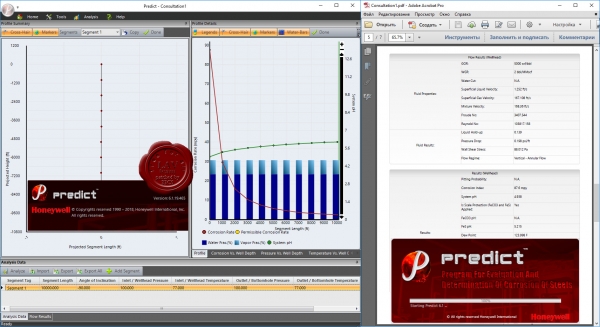
Predict helps users predict and control carbon steel corrosion and erosion in CO2 and H2S environments. It draws on Honeywell’s corrosion research to capture the effects of key environmental and operating parameters on corrosion rates. Effective corrosion monitoring and control enables users to extend asset life, minimize production losses and comply with regulations.
|
| |
 Читать статью дальше (комментариев - 8)
Читать статью дальше (комментариев - 8)
| |
|
 |
 Автор: Williams Автор: Williams
 Дата: 14 декабря 2018 Дата: 14 декабря 2018
 Просмотров: 5 046 Просмотров: 5 046 |
| |
Halliburton Landmark Engineer's Desktop (EDT) 5000.14.0
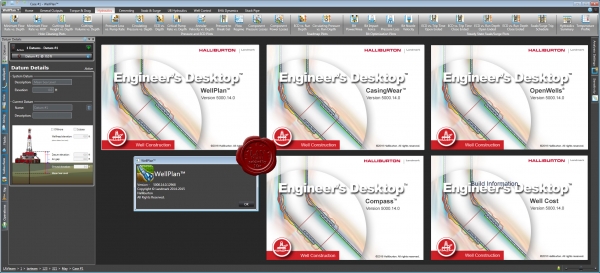
Landmark enables the design of wellbore geometries for maximum contact with the most productive reservoir zones. Similarly, completions and interventions can be designed with an eye on long-term productivity. With Engineer’s Desktop suite of applications, the most sound and cost-effective wellbore schemes and paths can be engineered. Modeling fluid flow through complex completions is beyond traditional reservoir simulation and nodal capabilities because it should combine an accurate reservoir inflow with a highly detailed wellbore model.
Faced with ambitious drilling schedules, reduced budgets, and more complex reservoirs, the exploration and production industry today requires a solution that brings together asset teams with the goal of faster, smarter, safer results. The one complete and integrated well construction software suite on the market is Landmark Engineer’s Desktop (EDT) 5000.14
This application continually adds new science to help companies thrive in the age of drilling intelligence. Engineer’s Desktop (EDT) 5000.14 application runs on a shared data model, facilitating business process management and supporting the Well Construction Lifecycle through aiding in enhanced drilling operation efficiency. Thereby, allowing operators to take control of their well data, and through deep integration with the industry's broadest portfolio of well engineering solutions, help drive better well construction decisions.
Engineer’s Desktop software contains the following application areas:
- Engineer's Data Model software - EDM Administration Utility, SQL Server Utility, Drilling and Well Services Data Migration
- Drilling Engineering - CasingSeat, COMPASS, StressCheck, WELLPLAN, WELLCAT, and Well Cost applications
- Data Management—OpenWells, Data Analyzer, PROFILE, and Real-Time View applications.
|
| |
 Читать статью дальше (комментариев - 18)
Читать статью дальше (комментариев - 18)
| |
|
 |
 Автор: Williams Автор: Williams
 Дата: 13 декабря 2018 Дата: 13 декабря 2018
 Просмотров: 3 355 Просмотров: 3 355 |
| |
LH Logismiki Steel Connections v1.12.0.32
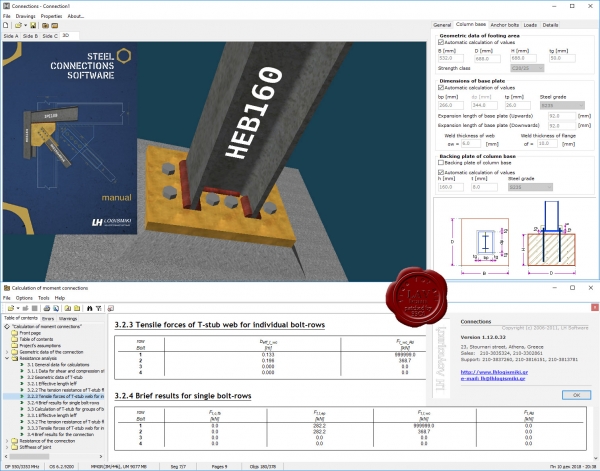
The software is used for the design of connections between steel structural members according to the clauses of Eurocode 3 / prEN 1993-1-8: 2003 / Part 1.8: Design of steel structures; Design of joints (Greek version 5 May 2003).
The module interacts with the software Fespa:
- for obtaining all needed information for the calculation of a joint (geometry of members, actions effects), and
- for creating the report and structural drawings for every joint.
The user may work with the module "Design of joints” independently (without Fespa), by using the geometrical and load characteristics that he desires.
The program calculates the connections between members of cross-section type H or I and covers:
Moment connections
- Bolted beam-to-column connections with end-plate,
- Bolted beam-to-beam connections with end-plate,
- Column base connection to concrete fundament with anchors.
Shear connections
- Bolted beam-to-column connections with steel angles,
- Bolted beam-to-column connections with steel angles, with the beam connected to the web of the column,
- Bolted beam-to-beam connections with steel angles.
Tension connections
- Bolted or welded connections of diagonal members.
|
| |
 Читать статью дальше (комментариев - 17)
Читать статью дальше (комментариев - 17)
| |
|
 |
 Автор: Williams Автор: Williams
 Дата: 10 декабря 2018 Дата: 10 декабря 2018
 Просмотров: 1 540 Просмотров: 1 540 |
| |
Innovative Geotechnics PileROC v2
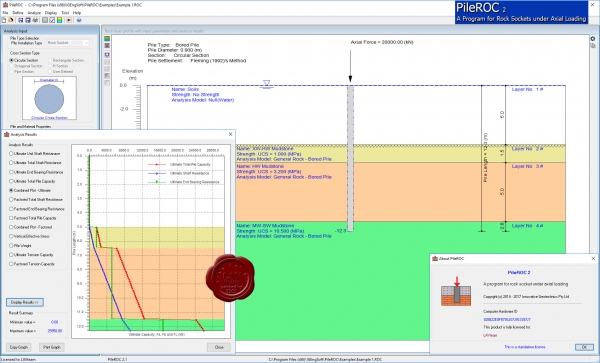
Innovative Geotechnics provide geotechnical design tools for pile groups, laterally loaded piles, nonlinear p-y curve generation and rock socket design including single piles or pile groups under lateral and vertical loading based on finite element method. Our programs are focused on the geotechnical analytical knowledge, improving user engagement and reducing potential input uncertainties. All geotechnical programs and software adopt simple input interface for the users to interactively input the analysis information such as soil layer information, soil properties, and foundation parameters.
PileROC is a program specially designed to predict the settlement for the piles socketed into rock under compressive axial loading and estimates ultimate and factored axial capacities for a range of socket lengths.
|
| |
 Читать статью дальше (комментариев - 5)
Читать статью дальше (комментариев - 5)
| |
|
 |
 Автор: Williams Автор: Williams
 Дата: 8 декабря 2018 Дата: 8 декабря 2018
 Просмотров: 1 599 Просмотров: 1 599 |
| |
Innovative Geotechnics PileLAT v2.2
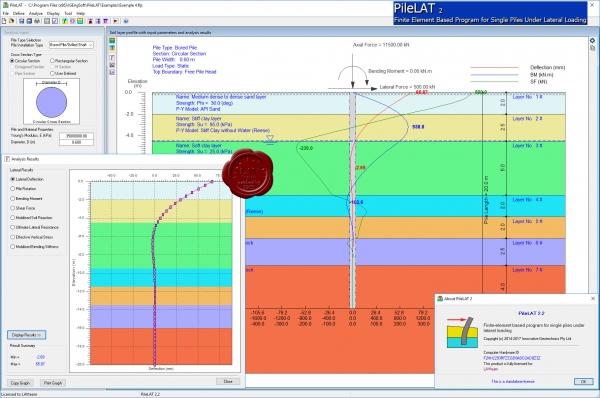
Innovative Geotechnics provide geotechnical design tools for pile groups, laterally loaded piles, nonlinear p-y curve generation and rock socket design including single piles or pile groups under lateral and vertical loading based on finite element method. Our programs are focused on the geotechnical analytical knowledge, improving user engagement and reducing potential input uncertainties. All geotechnical programs and software adopt simple input interface for the users to interactively input the analysis information such as soil layer information, soil properties, and foundation parameters.
PileLAT is a finite-element based program that analyzes the behaviour of laterally loaded piles (Single piles mainly under lateral loading) based on automatically generated nonlinear p-y curves for various soil and rock types. More info |
| |
 Читать статью дальше (комментариев - 5)
Читать статью дальше (комментариев - 5)
| |
|
 |
| ПОИСК ПО САЙТУ |
 |
|
 |
| КАЛЕНДАРЬ | | |
 |
| « Октябрь 2025 » |
|---|
| Пн | Вт | Ср | Чт | Пт | Сб | Вс |
|---|
| | 1 | 2 | 3 | 4 | 5 | | 6 | 7 | 8 | 9 | 10 | 11 | 12 | | 13 | 14 | 15 | 16 | 17 | 18 | 19 | | 20 | 21 | 22 | 23 | 24 | 25 | 26 | | 27 | 28 | 29 | 30 | 31 | |
|
 | |
| |
|